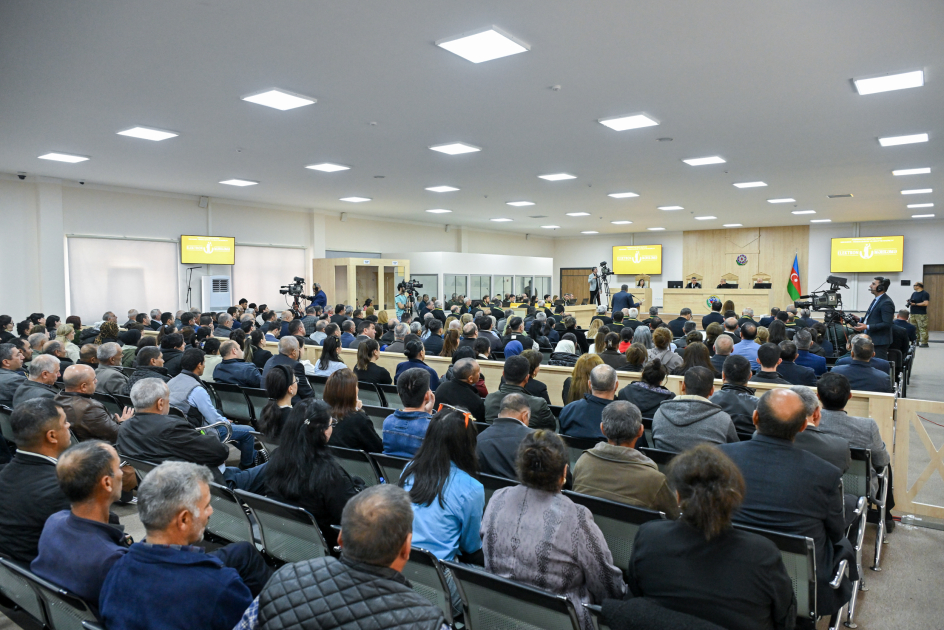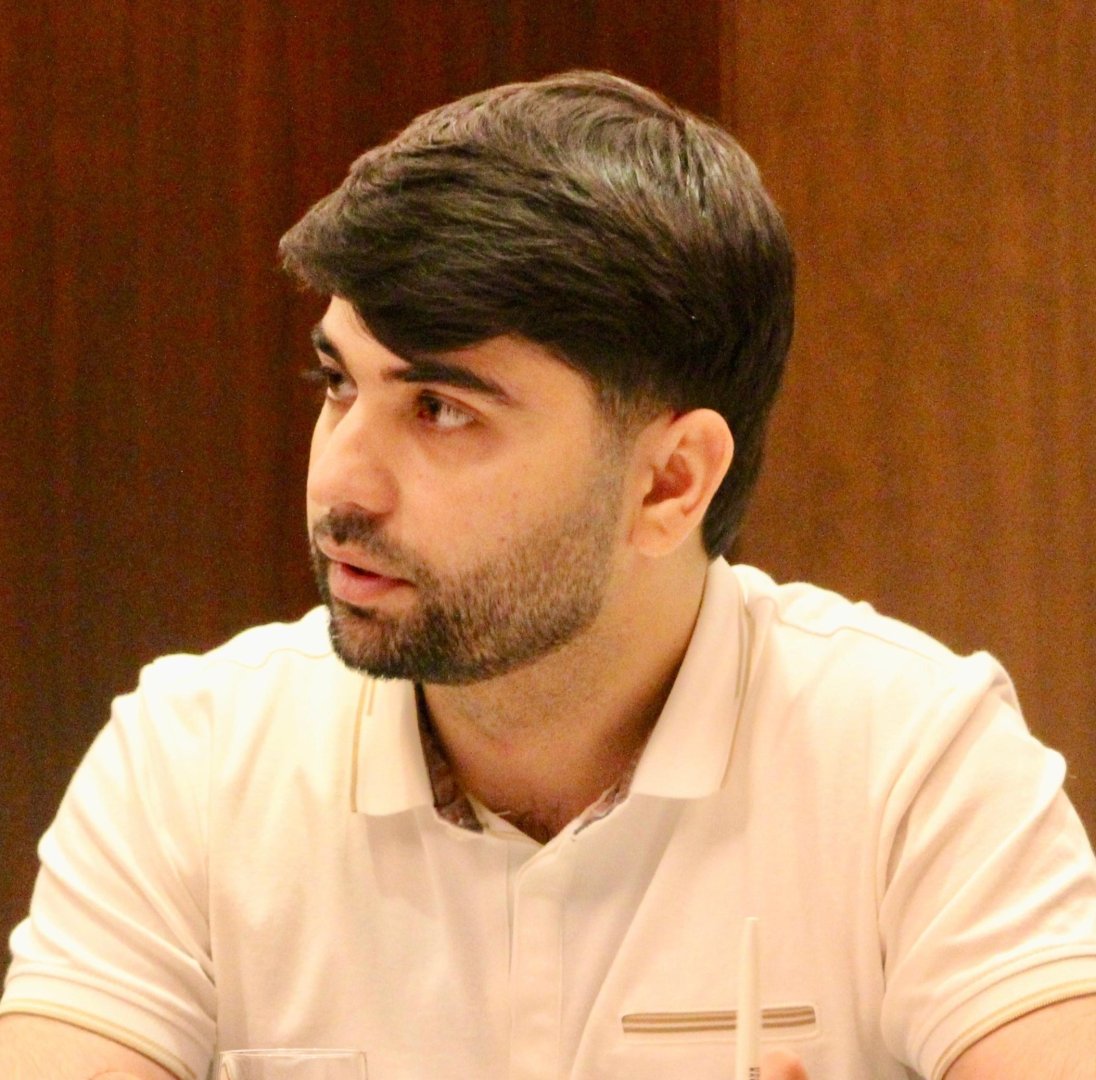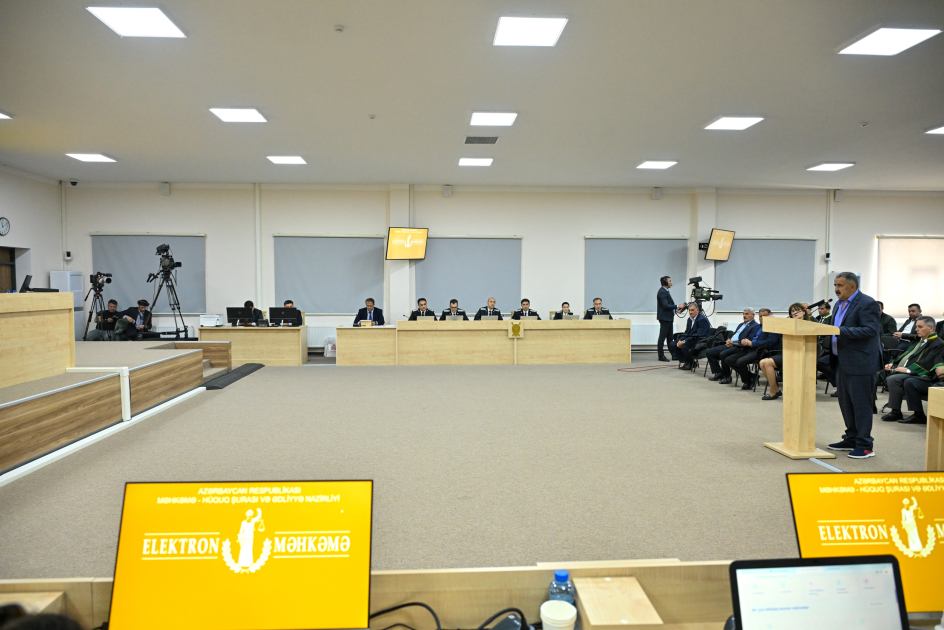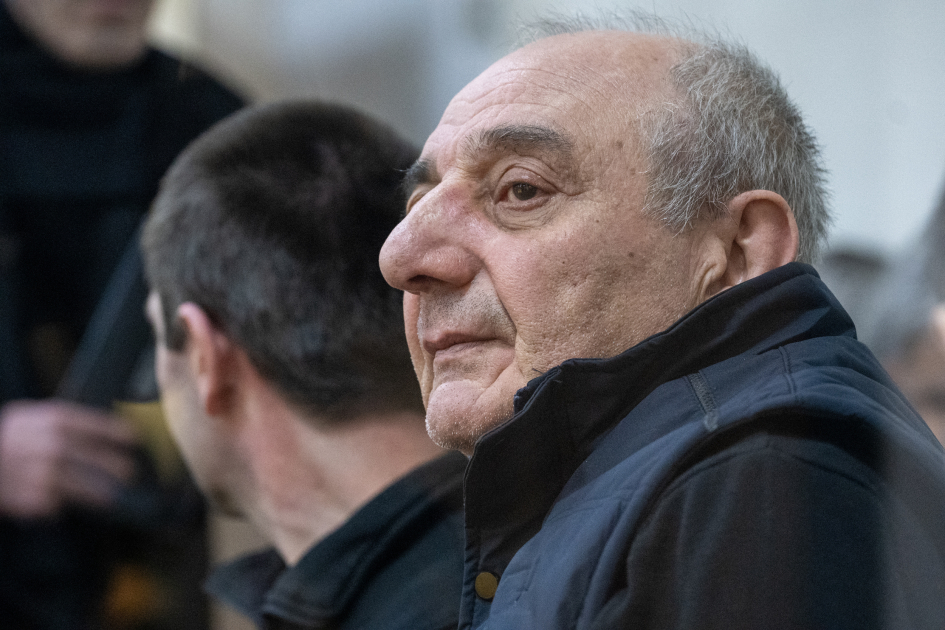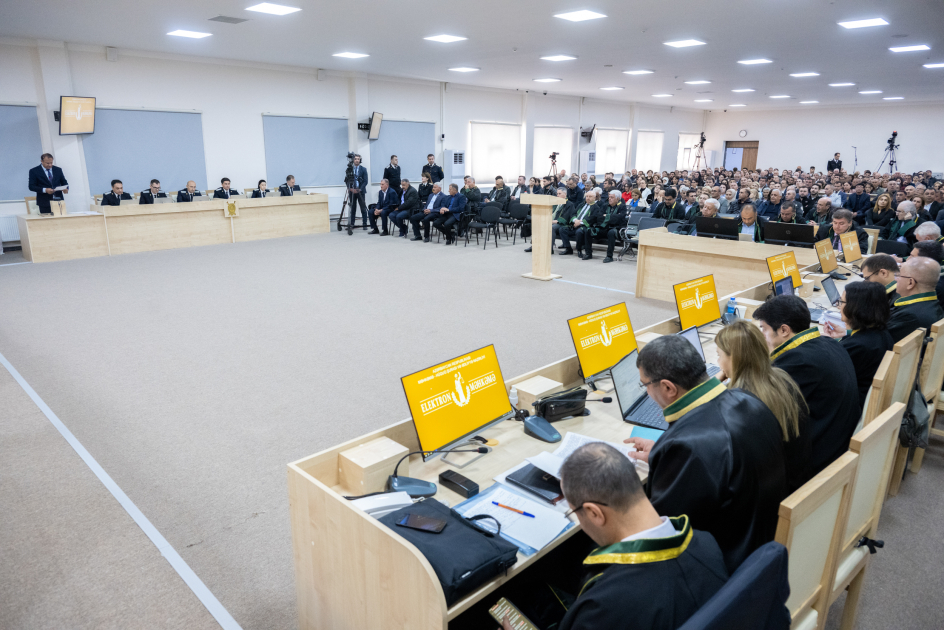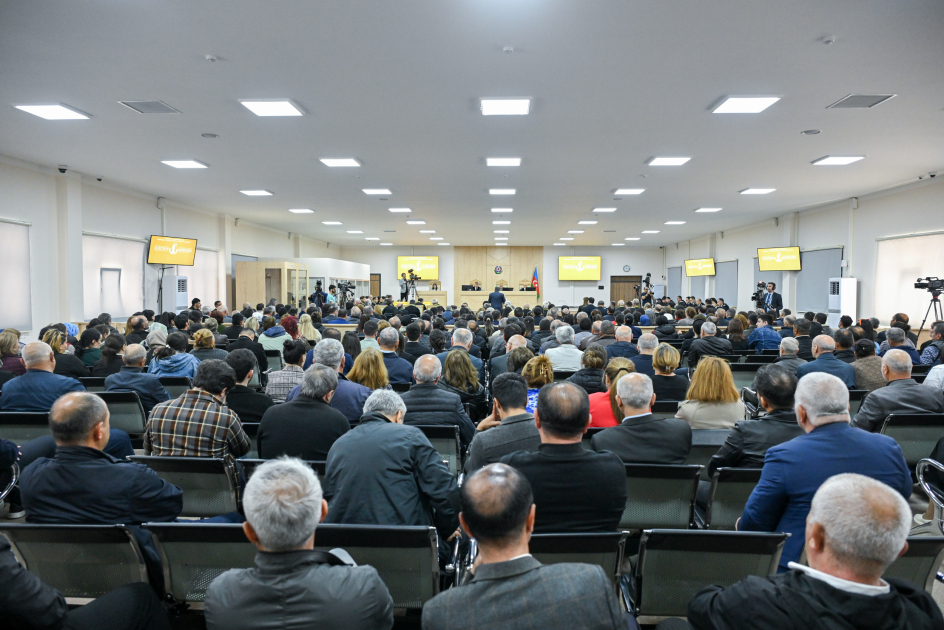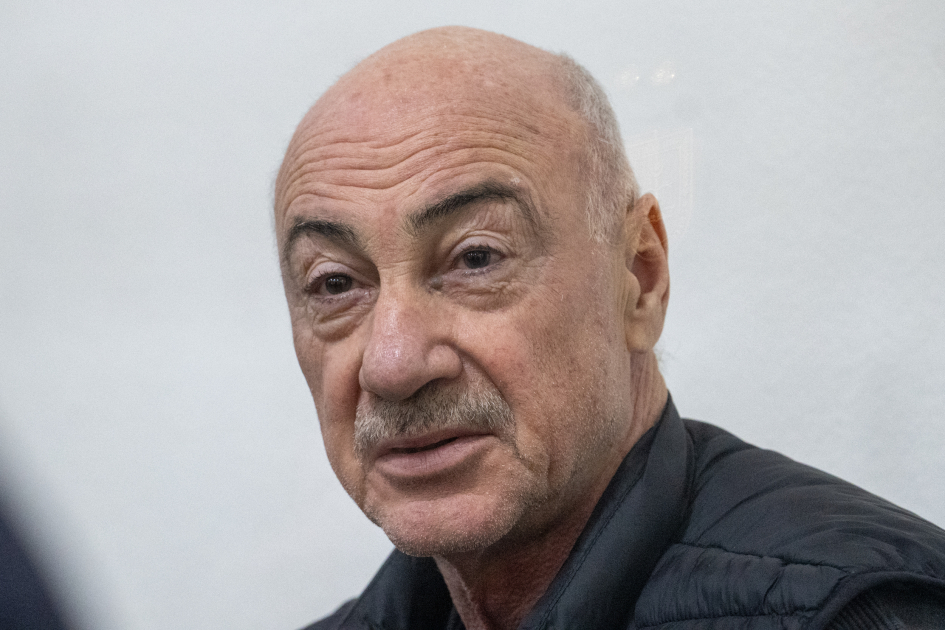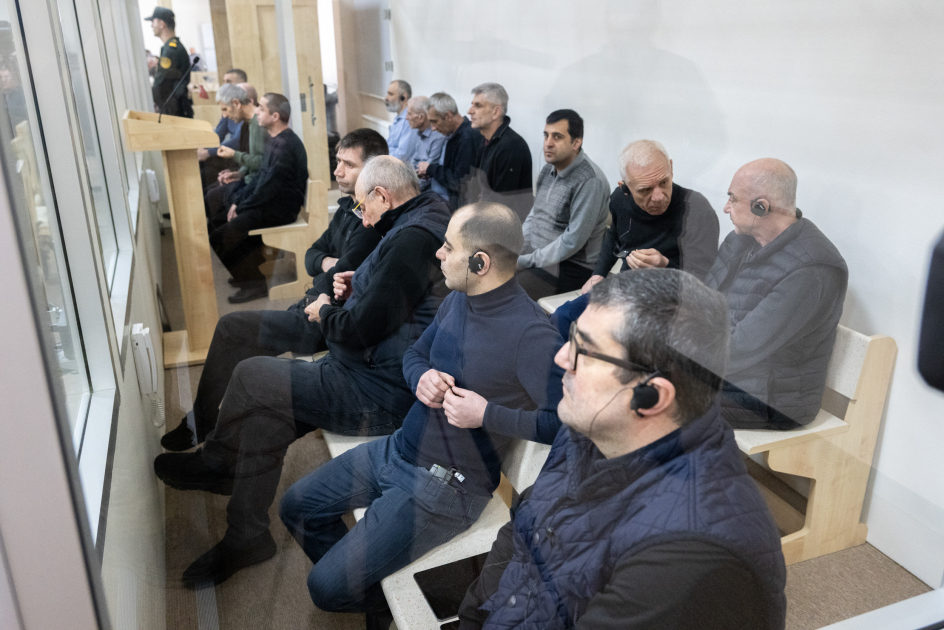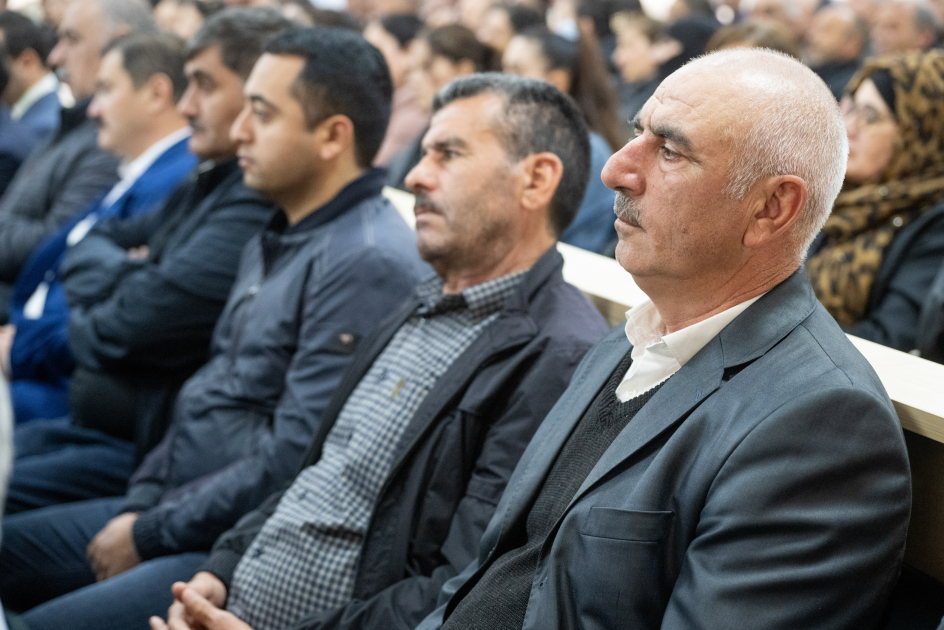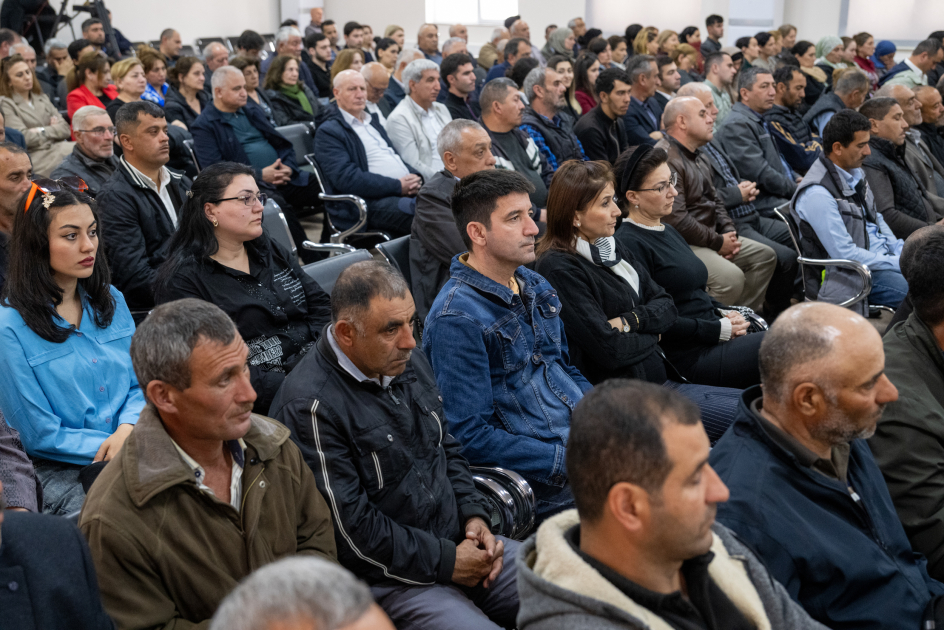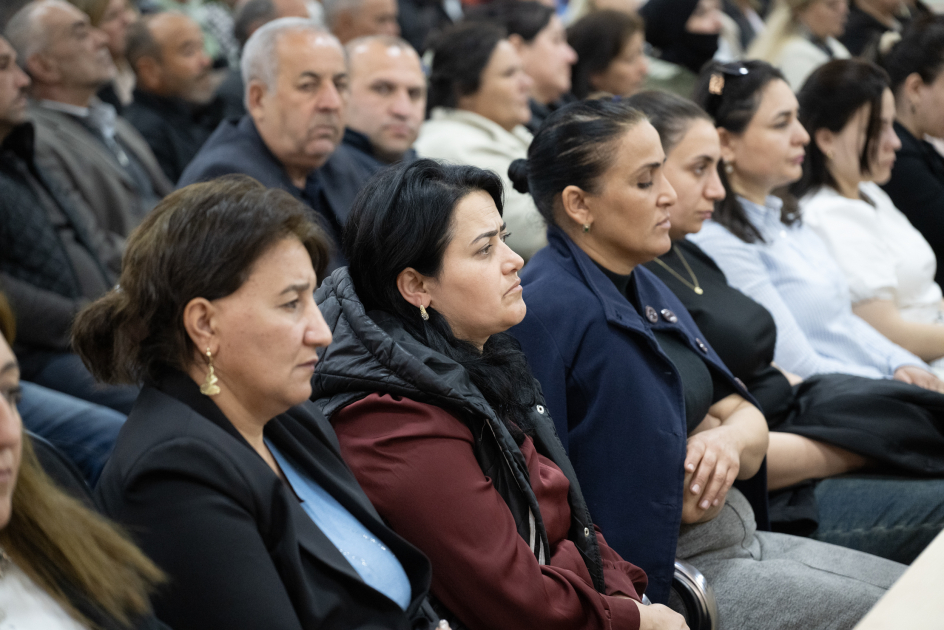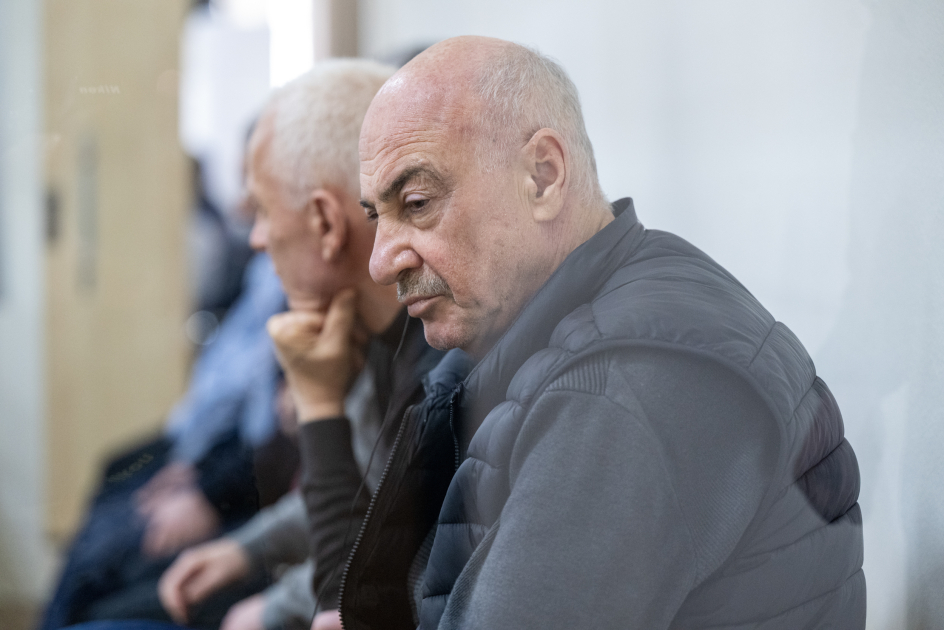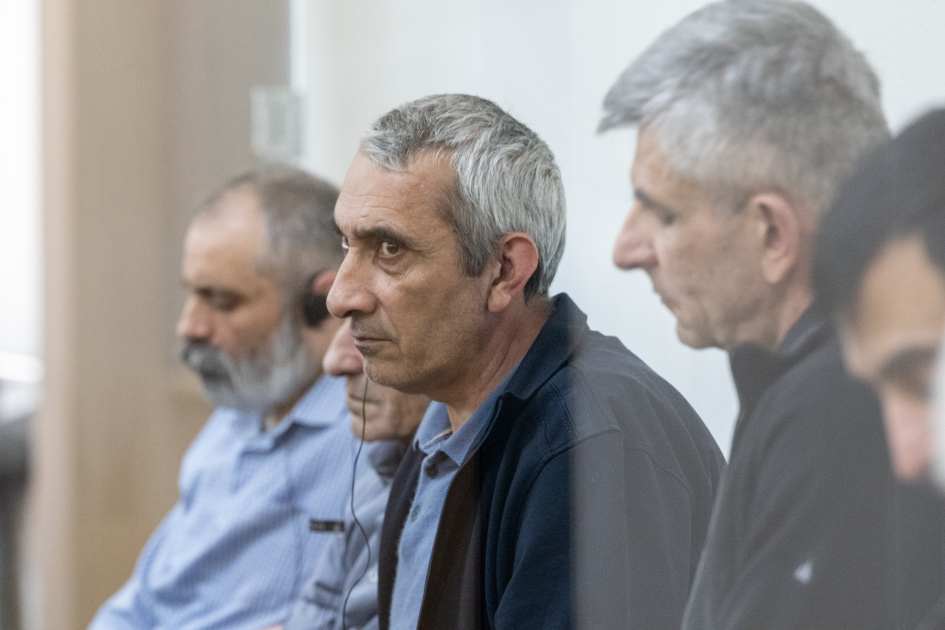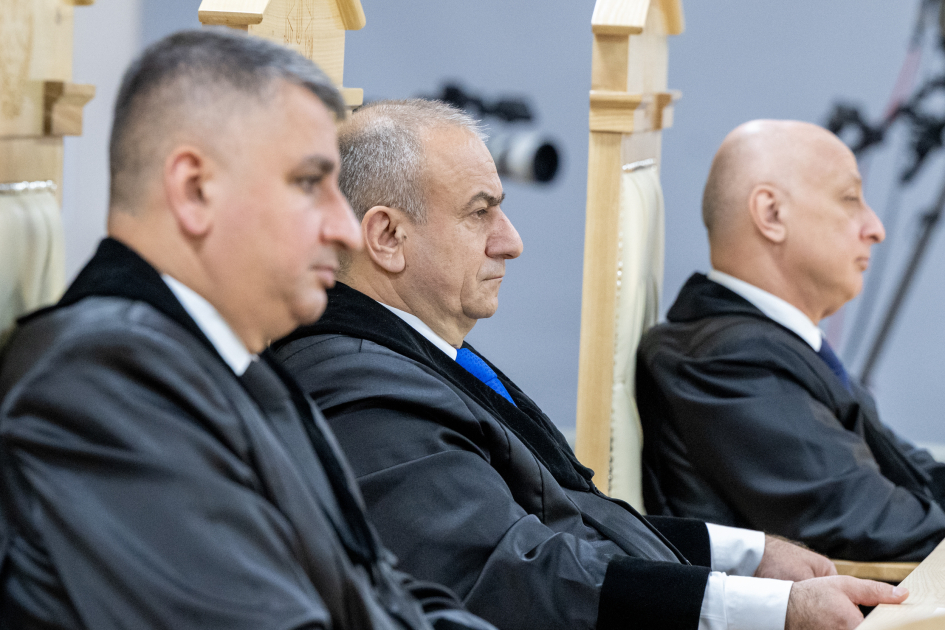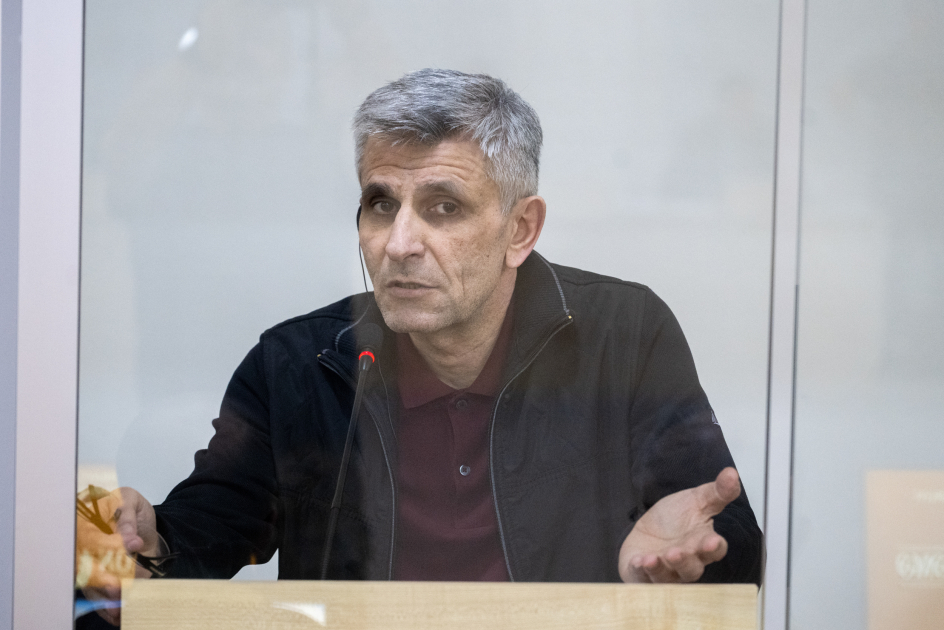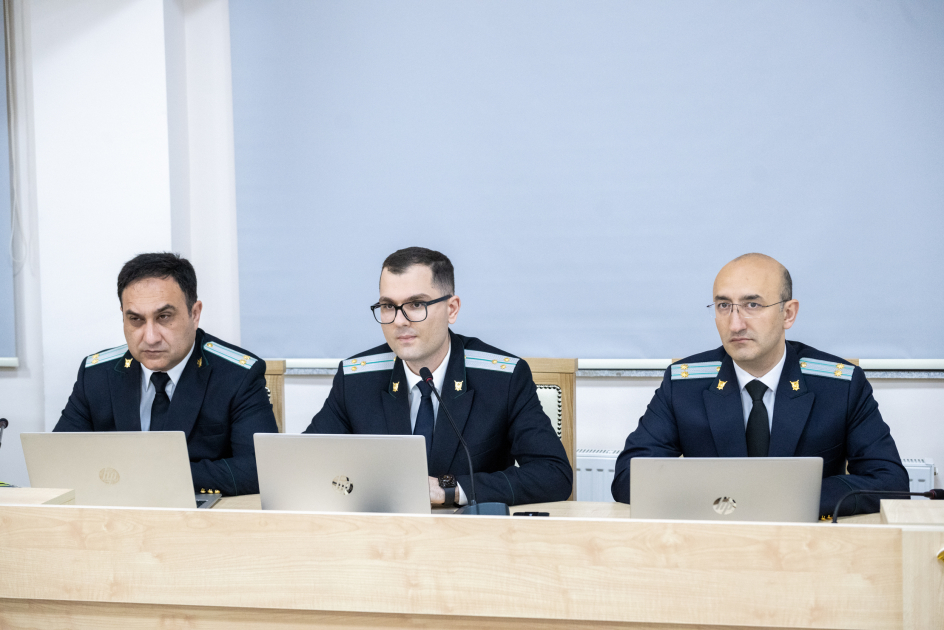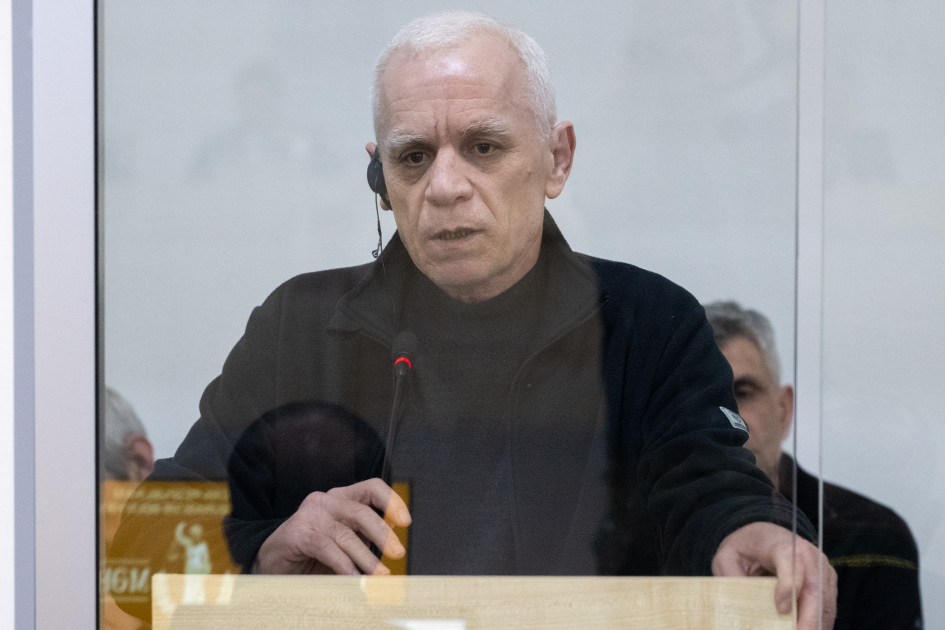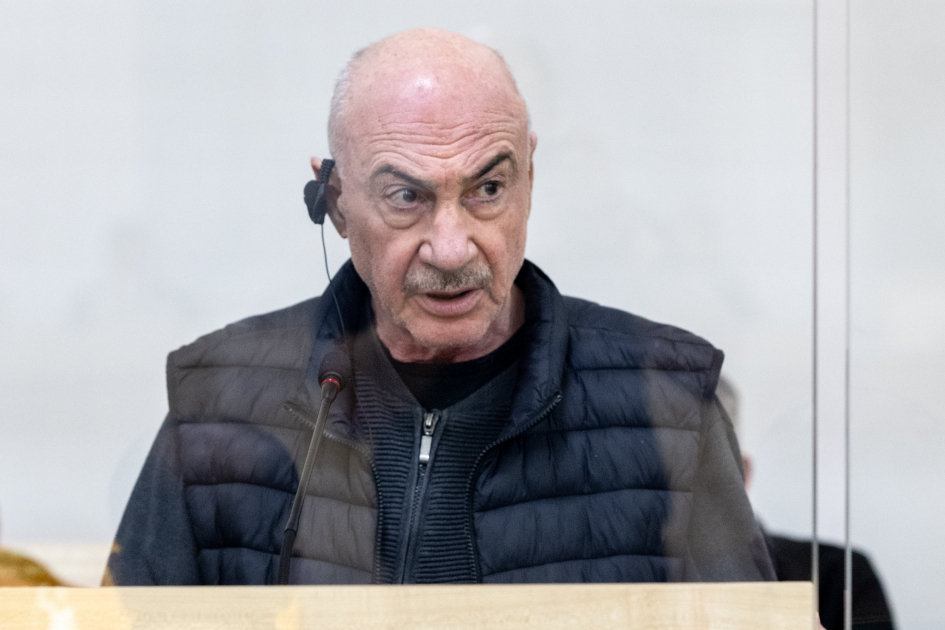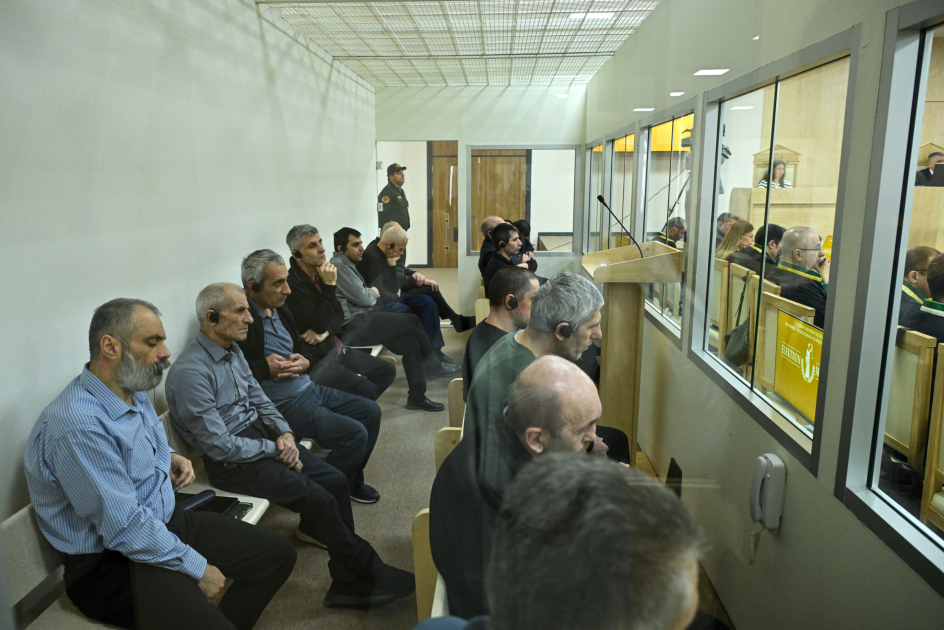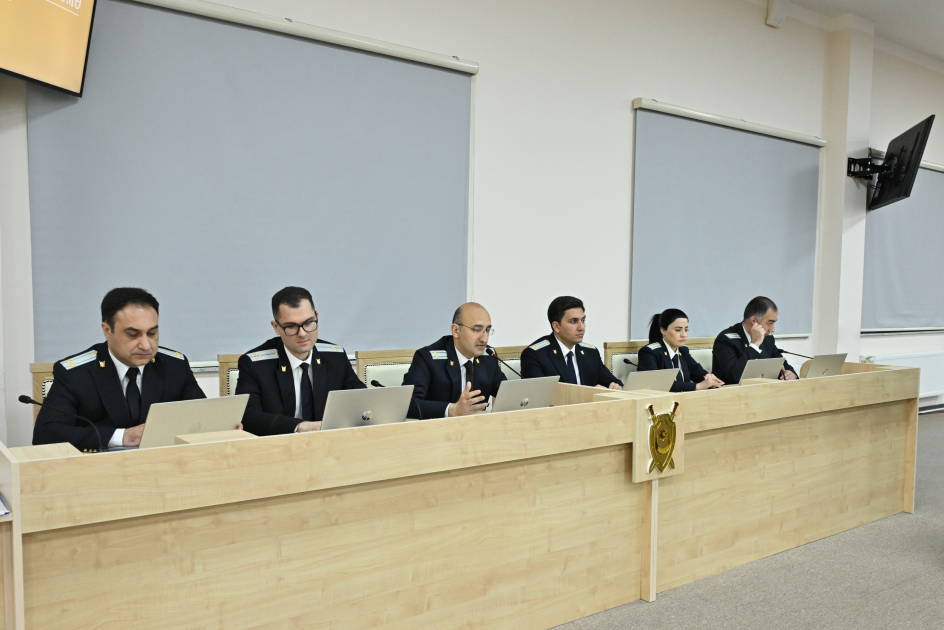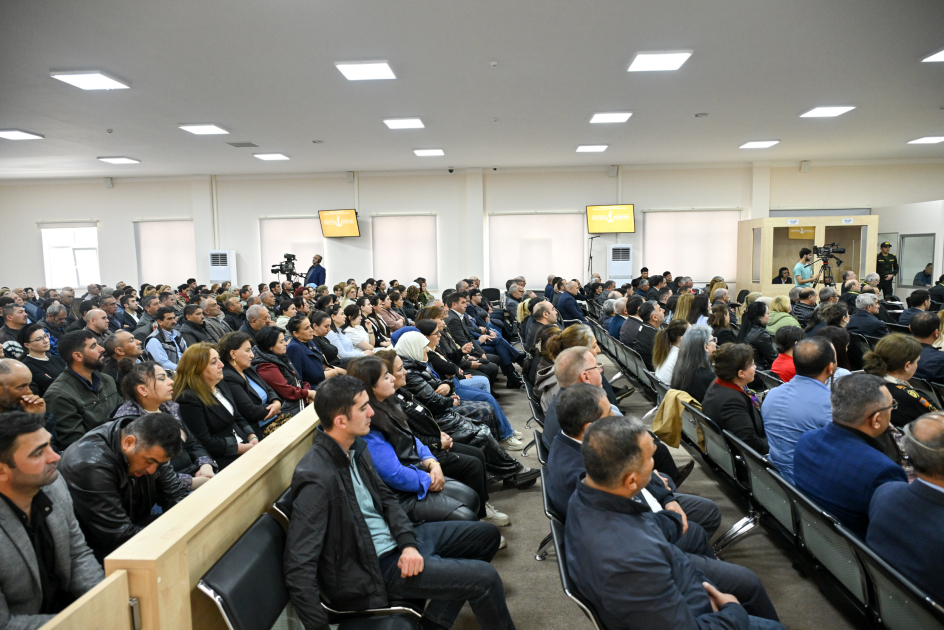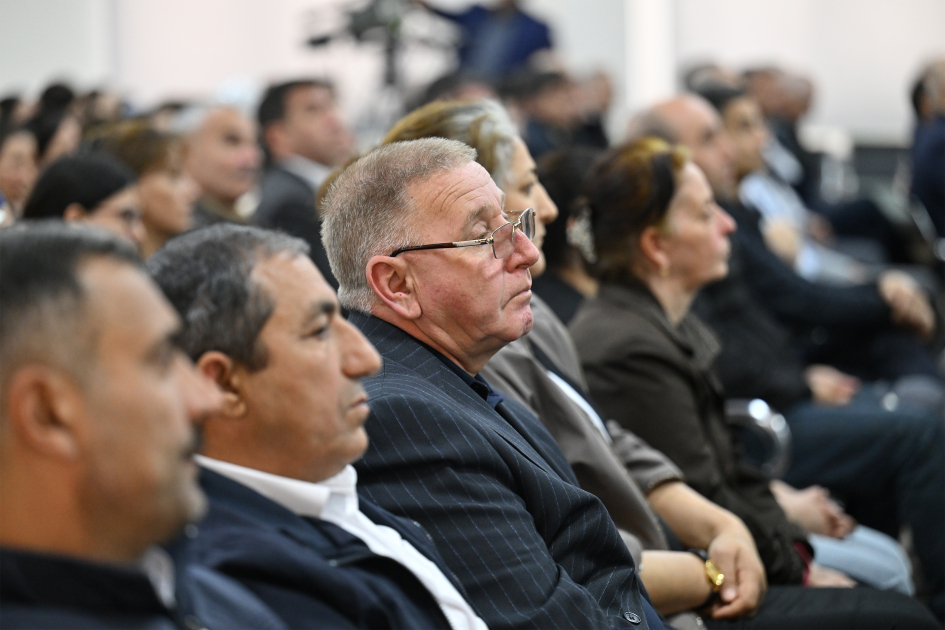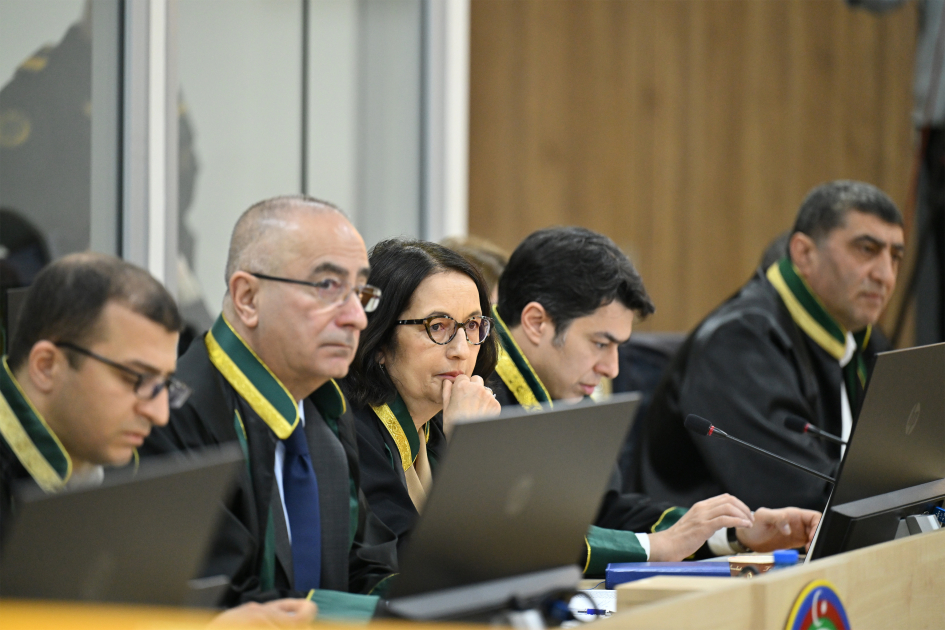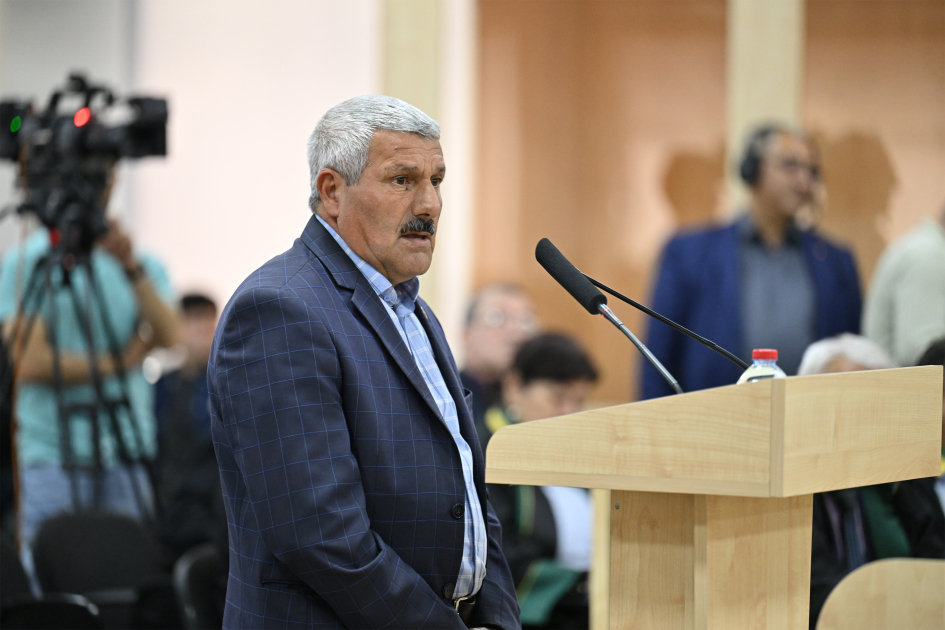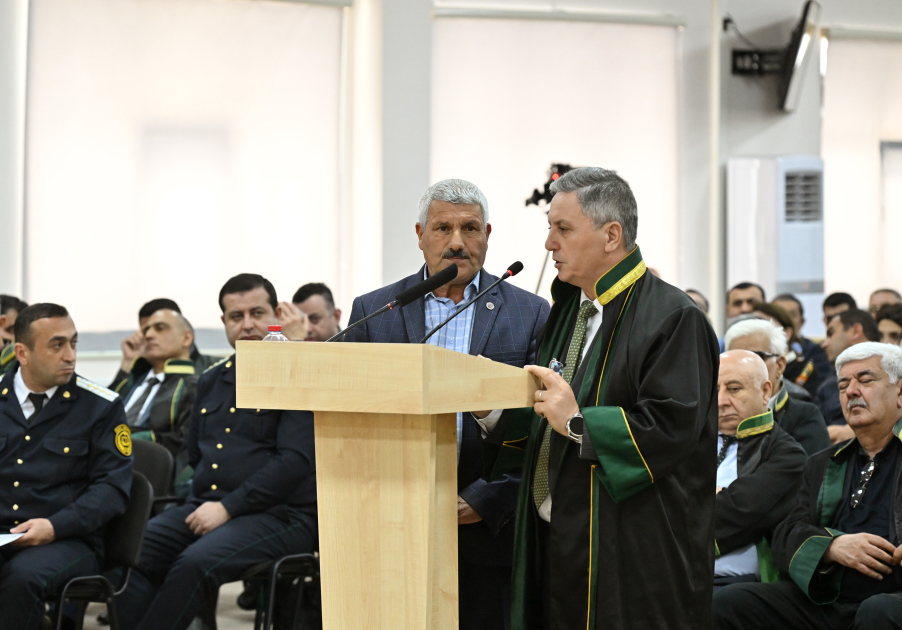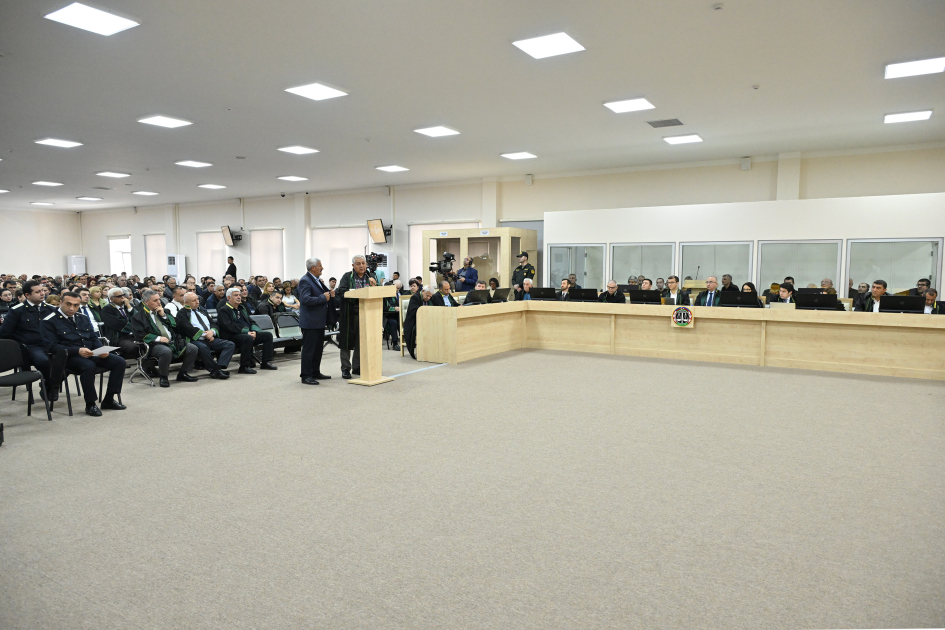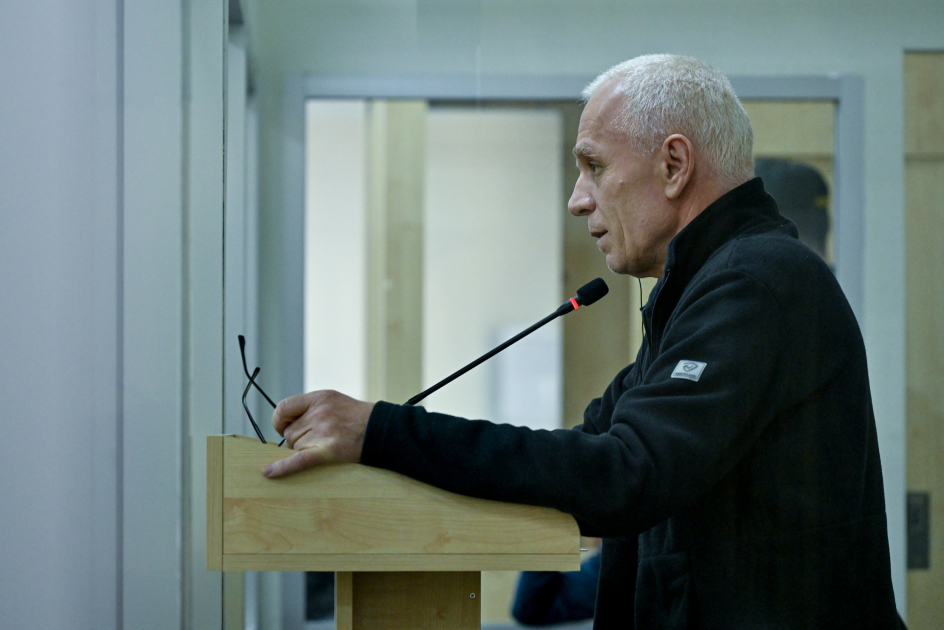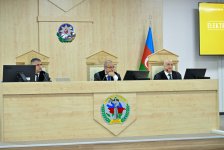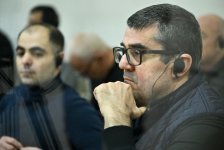BAKU, Azerbaijan, May 2. Public hearings on the criminal case against citizens of the Republic of Armenia Arayik Harutyunyan, Arkadi Ghukasyan, Bako Sahakyan, Davit Ishkhanyan, Davit Babayan, Levon Mnatsakanyan and others, who are accused of committing crimes against peace and humanity, war crimes, including the preparation and conduct of a war of aggression, acts of genocide, violation of the laws and customs of warfare, as well as terrorism, financing of terrorism, forcible seizure of power, forcible retention of power and numerous other crimes as a result of Armenia's military aggression, continued on May 2, Trend reports.
The hearings held at the Baku Military Court were presided over by Judge Zeynal Aghayev and a panel consisting of Jamal Ramazanov and Anar Rzayev (reserve judge Gunel Samadova). Each of the accused was provided with an interpreter into the language of their choice, as well as defense attorneys.
Present at the hearings were the accused and their defense attorneys, some of the victims, their legal successors and representatives, as well as prosecutors in charge of public prosecution.
The trial continued with the testimonies of the victims. After the testimonies, the victims answered the questions of public prosecutors, representatives of the victims, defense attorneys and the accused.
Judge Zeynal Aghayev introduced the panel of judges, interpreters, etc. to those of the victims who were participating in the hearings for the first time, and also explained their rights and obligations stipulated by national legislation.
The hearings proceeded to the victims giving their testimonies and answering questions.
One of the victims, resident of Garadaghli village Rafig Guliyev spoke about the attacks of the Armenian armed forces on the village, the firing on civilians and buses, the torture and killing of Azerbaijanis, etc., and then answered questions about the occupation of the village.
“They told us that Karabakh belongs to the Armenians, get out,” Rafig Guliyev noted.
He said that when the village of Garadaghli was occupied, he, his father and mother were taken hostage by the Armenian military. The victim said that there were mercenaries among those who attacked the village.
In response to questions from Senior Assistant to the Prosecutor General Vusal Aliyev, Rafig Guliyev said that he, his father Alastan Guliyev, along with a few other Azerbaijanis, were taken to Khankendi in KamAZ trucks. On the way, truck car was stopped in a place called “Baylik Baghi” and some of the hostages were killed.
The victim's father, Alastan Guliyev, died as a result of torture by Armenian soldiers after being held hostage for some time. “My mother was released after being held hostage for 13 days. I was released from captivity after 45 days. When we were held hostage, they beat us every evening. They gave us a piece of bread and a little water every day so that we wouldn't die alive. But they continued to torture us,” he added.
Rafig Guliyev also said that he was tortured although he was already wounded.
Another victim, a resident of the village of Akhullu in Khojavand district, Namik Huseynov, said that he knew those in the dock from television. Answering questions from public prosecutor Vusal Abdullayev, he said that he used to work as a cinema mechanic in Hadrut, and that in 1988 a campaign had begun among the population of Armenian origin about the secession of Karabakh from Azerbaijan and its transfer to Armenia.
Namik Huseynov also spoke about an attack on an Azerbaijani school by illegal Armenian armed groups on September 25, 1989 and his injury in the attack. “I saw that they were going to kill Isha and approached them. I remember it as if it were yesterday. Five people in red clothes came out. They beat us black and blue. Do you see this finger of mine? They broke it at that time. They smashed my head and I had 13 stitches put on it afterwards.”
Another victim, Chairman of the Garadaghli village council of People's Deputies Javay Huseynov spoke in his statement about the Armenian armed forces repeatedly attacking the village and about his own injuries. The victim said, “People were engaged in farming and livestock breeding. They did not want any war or conflict.”
Javay Huseynov said that residents of the settlements around Garadaghli village were of Armenian origin and that there were serious obstacles entering and exiting Garadaghli starting from November 1990. For this reason, food was delivered to Garadaghli by helicopters. The victim noted that after a while, the Armenian armed forces did not allow helicopters to move around either. On January 9, 1992, while he was bringing food from Aghdam to the Garadaghli village, the helicopter was fired upon by Armenian soldiers.
Javay Huseynov said that the village was regularly shelled with “Alazan” rockets, machine guns and automatic weapons, which resulted in deaths and injuries.
Answering questions from public prosecutor Tarana Mammadova, the victim, referring to the data of January 1992, said that the number of residents of Garadaghli village at that time was 1,166 people.
The conclusions of forensic medical examination conducted on the victims were also announced during the hearings.
After the break, the accused Davit Ishkhanyan answered the questions of public prosecutors regarding the occupation of Khojavand district. He said that he was born in the village of Heshan in Khojavand district and that the village had a population of 600-650 people. He emphasized that he has a sister and a brother, named Grigory Ishkhanyan. He said, “Grigory was an accountant at a collective farm named after Levon Mirzoyan in approximately 1988-1990.”
In response to questions, he said that he knew Emil Balayan, who was the chairman of the collective farm. He added, “But when my brother was an accountant, he was not the head, he was appointed as head of the collective farm at a later stage.”
In response to further questions, he claimed that he was not in the village of Garadaghli on June 26-27, 1991. He said, “On June 26, I went to Khankendi to celebrate my future wife's birthday.”
Then a preliminary explanation Emil Balayan had given to the investigation team on June 28, 1991 was announced. In that explanation, Emil Balayan said how the attack on the farm in the Azerbaijani village of Garadaghli was prepared and who was involved in the attack. He said that the attackers, in addition to himself, included Emil Vartanovich Balayan, Armin Rodikovic Avakyan, Monik Aramovich Gabrilyan, Araik Yegorovich Ishkhanyan, Armin Arzikovic Arapityan, Davit Rubenovich Ishkhanyan, Davit Maksimovich Kocharyan, Andranik Karlenovic Grigorian, Grigory Rubenovich Ishkhanyan, Aras Maksimovich Kocharyan, Vrenik Karlenovich Sevumyan. He then added: “All of this was led by Volodya Khachaturyan.”
In response to further questions from the Assistant to the Prosecutor General for Special Assignments, Tugay Rahimli, Davit Ishkhanyan said that he was called up for military service in September 1992 and was then appointed as battalion commander in the 28th “Khojavand Battalion”. The accused said that the commander of the “Khojavand defense district” was Monte Melkonyan and his deputy was Movses Hakobyan.
“There were 430-480 servicemen in my battalion. Other battalions were smaller or larger. I received orders from the general staff. The battalion had grenade launchers, machine guns and Kalashnikov assault rifles at its disposal,” he added.
Davit Ishkhanyan said that he had participated in the operation to occupy the upper part of Aghdara in the direction of Charakdar and Khudavang of Kalbajar district, two attacks on Fuzuli district, as well as the occupation of a small height in the direction of Ashagi Veysalli.
The accused shied away from answering the question whether there was an enmity between Emil Balayan and himself, which was why the former mentioned him and his brother’s name. He said that he was serving on rotation in the village on Saturdays and Sundays.
Then public prosecutor Vusal Aliyev announced that other persons of Armenian origin (Aleksander Grigoryan and others) also gave statements similar to that of Emil Balayan’s and mentioned the same names.
Then the accused Levon Mnatsakanyan answered the questions of the head of the Department of Public Prosecution of the Prosecutor General’s Office, Nasir Bayramov. He confirmed that in 2015-2018 he had held the position of “commander of the defense army” of the self-styled republic in the previously occupied territories of Azerbaijan. Before that, he had held a number of positions in the military. He said that he had begun serving in the so-called “army” in September 1992, noting, “I started as deputy commander of a motorized rifle battalion”.
He said that he had not participated in Khojavand operations and that he had gone to Khojaly for the first time in the second half of the 1990s.
The accused stated that on October 2, 1992, he was wounded while moving towards a battalion in the village of Shirlan of Shusha district.
Levon Mnatsakanyan said that when he was serving in Armenia he knew Major General Arkady Ter-Tadevosyan, aka “Commando”, who led the operation to occupy the Azerbaijani city of Shusha. He said that Arkady Ter-Tadevosyan was training specialists for the army at the time.
The accused Arkady Ghukasyan, in response to questions from public prosecutors, claimed that he was unaware of which forces had participated in the occupation of Khojavand and the massacres in Garadaghli.
He also alleged that he was not personally acquainted with Ashot Gulyan and Monte Melkonyan.
Arkady Ghukasyan was unable to give a specific answer to the question of public prosecutor Fuad Musayev about the fact that these people were awarded the title of “hero” of the so-called republic nonetheless. He said there was a nomination by a “commission” in this regard.
He said that he had met Artur Agabekyan around 1994-1995 and that in 1999 he was “appointed” “minister of internal affairs” of the self-proclaimed republic.
“As far as I know, he served in the Armenian ministry of defense,” Arkady Ghukasyan added.
We recall that Artur Agabekyan was the deputy minister of defense of the Republic of Armenia in 2000-2007 and also held a number of other senior positions in Armenia.
The next court hearing is scheduled for May 5.
We recall that a total of 15 Armenian nationals are being charged with numerous crimes involving direct leadership and participation of the Armenian state, its state bodies, military forces and illegal armed formations, verbal and written instructions, orders and assignments, provision of material and technical support, central governance, as well as the exercise of rigorous control, with the aim of committing military aggression and acts of terror against the Republic of Azerbaijan in the territory of Azerbaijan in violation of domestic and international law, and involving Robert Sedraki Kocharyan, Serzh Azati Sargsyan, Vazgen Mikaeli Manukyan, Vazgen Zaveni Sargsyan, Samvel Andraniki Babayan, Vitali Mikaeli Balasanyan, Zori Hayki Balayan, Seyran Mushegi Ohanyan, Arshavir Surenovich Garamyan, Monte Charles Melkonyan and others, including criminal acts committed during the course of the war of aggression waged by the aforementioned criminal group.
The said persons, i.e. Arayik Vladimiri Harutyunyan, Arkadi Arshaviri Ghukasyan, Bako Sahaki Sahakyan, Davit Rubeni Ishkhanyan, David Azatini Manukyan, Davit Klimi Babayan, Levon Henrikovich Mnatsakanyan, Vasili Ivani Beglaryan, Erik Roberti Ghazaryan, Davit Nelsoni Allahverdiyan, Gurgen Homeri Stepanyan, Levon Romiki Balayan, Madat Arakelovich Babayan, Garik Grigori Martirosyan, Melikset Vladimiri Pashayan, are being charged under Articles 100 (planning, preparing, initiating and waging a war of aggression), 102 (attacking persons or organizations enjoying international protection), 103 (genocide), 105 (extermination of the population), 106 (enslaving), 107 (deportation or forced displacement of the population), 109 (persecution), 110 (enforced disappearance of people), 112 (deprivation of liberty contrary to international law), 113 (torture), 114 (mercenary service), 115 (violation of the laws and customs of warfare), 116 (violation of international humanitarian law during armed conflict), 118 (military robbery), 120 (intentional murder), 192 (illegal entrepreneurship), 214 (terrorism), 214-1 (financing terrorism), 218 (creation of a criminal association (organization)), 228 (illegal acquisition, transfer, sale, storage, transportation and possession of weapons, their components, ammunition, explosives and devices), 270-1 (acts threatening aviation security), 277 (assassination of a state official or public figure), 278 (forcible seizure and retention of power, forcible change of the constitutional structure of the state), 279 (creation of armed formations and groups not provided for by law) and other articles of the Criminal Code of the Republic of Azerbaijan.

